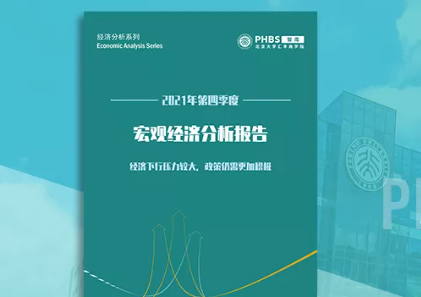Banks are instrumental to economic development. It is thus essential to understand the historical development of banking industries. Pioneer scholars have discussed the roles of law, institutions, culture, and ethnicity in shaping banking development. Another potential growth engine for banking is information technology. Banking is an information-sensitive industry. In the absence of rapid information flow, banks are confronted with information asymmetry, communication costs, and agency problems. This leads them to build their business on local, soft informational advantages, which restricts the scale economies of banking.

Innovation in information technology (e.g., telecommunications, computers, and the Internet) mitigates the information costs arising from distance barriers, which enables banks to expand their businesses on a broader geographical scale. By virtue of real-time information, they are now able to track the market and communicate with their branches and customers in distant areas in a timely fashion. Partly due to the complexity of the current world, how information technology affects banking development has not been fully understood.
In their paper “The telegraph and modern banking development, 1881-1936,” published by the international academic journal Journal of Financial Economics, PHBS Assistant Professor Xu Yuchen and her co-authors Professor Lin Chen, The University of Hong Kong, Assistant Professor Ma Chicheng, The University of Hong Kong, and Assistant Professor Sun Yuchen, The University of International Business and Economics, examine the effect of information technology on the rise of modern banking in the historical context of China.

The telegraph was introduced to China in the late 19th century, constituting a truly revolutionary advance in information technology. Compared to the traditional courier channels of ships and horses, the telegraph sharply improved the efficiency of long-distance communications, shortening transit time from months to hours. Moreover, the telegraph fostered modern financial instruments, such as telegraphic transfer and settlement, largely reducing the time and operational costs of banking. Coming before the invention of radio broadcasting (1920s), television (1930s), and the Internet-based, multi-dimensional information channels of recent decades, the telegraph represents a singular "FinTech" that allows us to better capture the effect of information technology on banking.
China saw the genesis and expansion of modern banks, which emerged in China after the 1840s under Western influence. After the Oriental Bank, a British-Indian joint venture, opened a branch in Hong Kong in 1845, foreign banks gradually expanded their business in China’s treaty ports. In 1897, the first Chinese domestic modern bank, the Imperial Bank of China (IBC), began operations. Thanks to the New Policies (c.1901–1911), the imperial authority, in its final decade, began to promote the establishment of new banks in the Western style. Modern banks were further promoted under the succeeding Republican government, which fully recognized their importance in economic modernization.
Different from the traditional banks, modern banks had limited liability and adopted modern or Western-style administrative systems; this included, for example, regular meetings of shareholders, a separate board of directors, balance sheets constructed according to international standards, and collateral loans, among others. Historical narratives suggest the importance of the telegraph in promoting modern banking development. This is mainly because the telegraph improved the informational environment in which banks operated. On the one hand, the fast-cum-convenient telegraph lowered the entry cost of banks by mitigating inter-regional information asymmetry. This enabled the banks to enter "shadowy" areas that had been previously dominated by traditional financial institutions. On the other hand, the telegraph facilitated information exchange and business dealings between bank headquarters and their branches, and thus helped the banks overcome the agency problem and accordingly improve administrative efficiency. Thanks to real-time information, banks could effectively monitor their branches in distant areas.
Assistant Professor Xu and her co-authors first document a significant positive effect of the telegraph on banking development. For prefectures, the presence of telegraph stations in 1896 was associated with more modern banks, both in the short run (1911) and in the long run (1936), as well as a higher annual average growth rate of those banks. To alleviate the endogeneity issue, the authors use the shortest distance from a prefecture to the hypothetical military trunk line as the instrumental variable of the distribution of telegraph stations to identify the causal link.
A primary mechanism by which the telegraph promoted banking development was the expansion of the branch network. The authors find that banks were more likely to open branches in prefectures connected by telegraph lies, and with the expansion of those telegraph lines, the banks could expand their branch networks to distant areas. Moreover, by analyzing the branch network of each bank, the authors find that the telegraph increased the overall presence of the branches, rather than simply redistributing their geographic locations. These results indicate that the telegraph expanded the branch network in terms of both the number of branches and the geographical coverage.
The overall analyses are premised on the assumption that the telegraph increased inter-regional information flow. Drawing upon textual analysis of Shen Bao (Shanghai News), the largest national newspaper at that time, the authors gauge inter-regional information flow by enumerating the frequency of county names reported in the newspaper. The frequency of newspaper reports on prefectures connected by the telegraph was significantly greater than for their unconnected counterparts, suggesting improved information transparency in the former. This, in turn, increased the number and growth of banks.
The findings of the paper indicate that the telegraph as a revolutionary advance in information technology promoted the early development of modern banks. This echoes the importance of information technology in shaping banking or financial development in contemporary time, fostering financial services competition, reducing agency costs, and shaping productivity and structural change, among others.


















